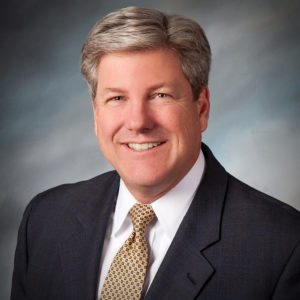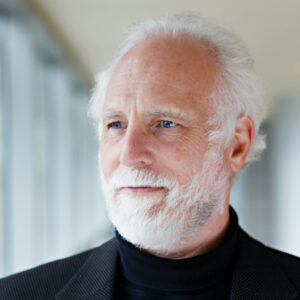Originally published in Riabiz.com on December 8, 2014
By Knut A. Rostad
Brooke’s Note: Knut Rostad has spent more time helping to wrap the RIA mind around the concept of fiduciary care than just about anyone. The challenge, he knows, is to treat the issue with a Zen-like philosophy. It needs to reach a mass audience if there’s to be any hope of having it backed up by the force of law. But being a fiduciary is really what you do and not what you say or write. It’s about doing what’s right, which means knowing the difference between right and wrong. All too often financial advisors act as if fiduciary care can be defined as simply doing better than the norm. But the norm is still in a fairly pitiable state. In a nutshell, Rostad is telling Robbins: You need to not be satisfied with doing better. Only much better suffices. This column is also a response to this article:9 ways that Tony Robbins impressed the ‘jaded’ journalists at RIABiz.
The media blast about Tony Robbins as a potential RIA spokesman has produced a torrent of RIA comment ranging from the most cynical to the most hopeful. Is Robbins just hyping his book or, as he contends, seeking to help investors who suffered in the 2008-’09 financial crisis? As fiduciary maven Ron Rhoades put it, Robbins’ appearance on the scene is a “very positive development, a huge positive.” Though the “jury is still out on the content of his message.”
You don’t need to look into Robbins’ heart for clues. He’s been interviewed endlessly and tonight he has the floor for two hours at the MarketCounsel Summit that begins today. See: Tony Robbins is set to crash the RIA party with two hours of testosterone.
Best in class
Recently, Brooke and Lisa made the case for why Robbins has the potential to be an excellent RIA and investor advocate. They discussed Robbins’ personal background, his own relationship with a breakaway broker and his national prominence as a self-help guru. Fair enough as far as it goes.
But what about Robbins’ views on investing and fiduciary advice?
On investing, Robbins’ big idea is that regular investors can learn and benefit from the “best” investors. Take Ray Dalio, co-chief investment officer of Bridgewater Associates (a prominent hedge fund). Robbins writes about Dalio’s investing strategy: “This will blow your mind and change your life.”
On the fiduciary front, Brooke and Lisa note that Robbins “has been interviewed more than a hundred times in the past few weeks” and “in nearly every interview he pushes the word ‘fiduciary.’” They conclude that “Robbins determination to get past the confusion can’t be bad.”
But what does Robbins say?
“People don’t know what the new ‘F’ word is. You’ve got to understand what a fiduciary is. Its about income and not assets. You’ve got to have asset allocation. I’ve had a chance to learn from the best on the earth and the average person can learn from them. Step one is to educate the vast majority of consumers. The vast majority of people are so confused.”
Detour ahead
This is it? Four years of research and interviews with the “best on the earth,” including Yale’s David Swensen, Jack Bogle and Charles Schwab? This is Robbins takeaway on what investors need to know about fiduciary conduct? See: What one financial advisor discovered after plunking down $12 for Tony Robbins’ ‘Money’ manifesto.
“Loyalty,” “due care” and “utmost good faith,” the touchstones of fiduciary duties, are a just a few words about powerful ideas that investors actually do understand. Robbins should form his recommendations to investors around them.
Robbins says he wrote his book to help ordinary investors badly harmed in the 2008 financial crisis. He explains that he wanted to share with all investors what he learned from the best investors. Fair enough. But then, instead of drawing lessons taught by Schwab, Bogle and Swensen, Robbins constructs a “detour” sign and seems to head in a very different direction. His big takeaway thus far: Its the secret sauce from superstar hedge fund investors such as Dalio that will most help investors. This is what ordinary investors really need to know. See: How Tony Robbins co-opted Elliot Weissbluth (and HighTower data) and vice-versa.
Five pillars of fiduciary
If Robbins aspires to be an RIA spokesman, as some suggest, he’s got his work cut out for him tonight in Vegas. Robbins needs to develop his message to include a financial crisis narrative that connects to the disenchanted investors. He should talk to RIAs about earning investor trust through fiduciary conduct. He should argue how a true fiduciary standard is the starting point, arguably the only starting point, to winning back investors and remaking the investing landscape. He should argue that RIAs may be the only professionals who, through their education and experience and fiduciary culture, CAN do so.
Robbins should:
1. Talk about why investor distrust is a cancer on the industry, markets and the economy. And that RIAs are not cancer free. As Chip Roame notes, investors view everyone in finance like Bernie Madoff. Cite the conservative think tank American Enterprise Institute’s research on how investors view Wall Street as a foreign culture, and concludes, in part, “Many of these [Wall Street] firms are not ethical or concerned about the wellbeing of the country.” See: Why a reputation of shadiness persists in the financial advisory industry.
2. Talk about how some RIAs aggravate this bad situation by resisting transparency. Cite Paladin Registry investor research on fee opacity, or Merrill Lynch Wealth Management’s chief John Thiel’s ‘confession’ that his own clients don’t trust him because of fee opacity. Or Ron Carson’s research on advisors’ ineptitude in explaining fees to clients. Refer to the Schwab advertising campaign as an example of how much the issue of fee opacity means to investors. See: Tony Robbins prohibits reporters from covering his two-hour MarketCounsel speech.
3. Describe in concrete terms what RIAs can do to pierce the body armor of distrust. Fiduciary duties generally split between technical and ethical criteria. While both are necessary, stress the ethical criteria. This is where trust is rebuilt. Stress the overriding principles of conflict avoidance, transparency and plain English clear communications. See: New regulatory world dawns with oppressive ADV Part 2 form.
4. Be explicit that fiduciary talk alone won’t cut it; talk alone can be harmful and can damage trust. (See Ron Carson above). Be explicit about what RIAs must do. How they must act. How they must show investors that RIAs are not wirehouse brokers. See: Why Mindy Diamond is morphing her firm away from pure wirehouse recruiting.
5. Brooke and Lisa note that Chuck Schwab advises Robbins that “98% (of investors) should really predominantly go into index funds.” (Jack Bogle and David Swensen may well suggest the better number is 100%, but lets not quibble.) This is good advice that Robbins should take to heart. Tony note to self: ‘Listen to Chuck, Jack and David.’ See: Schwab to make long-awaited move in 401(k) market with an all-indexed mutual fund and ETF strategy.
Robbins is an extraordinarily talented and accomplished professional. He could be a very powerful force for good for tens of millions of investors if he so chooses. Let’s hope he does.
Knut A. Rostad co-founded and chaired the Committee for the Fiduciary Standard and is president of the Institute for the Fiduciary Standard, a nonprofit formed in 2011 to advance the fiduciary standard through research, education and advocacy. He is the regulatory and compliance officer at Rembert Pendleton Jackson, a registered investment adviser in Falls Church, Va.

